Fiona Richards is Senior Lecturer in Music at The Open University. Her research interests include music in England, music and literature, and Australian culture. Recent journal articles have focused on musical themes in the works of writers D. H. Lawrence, David Malouf and Randolph Stow. Significant publications include a monograph on the English composer John Ireland (Ashgate, 2000), two chapters for the John Ireland Companion (Boydell, 2011), and an edited volume, The Soundscapes of Australia: Music, Place and Spirituality (Ashgate, 2007). Fiona is currently working on a book on the Boyd Neel Orchestra.
Abstract
This chapter draws on the diaries of two composers born in the latter part of the twentieth century – Frederick Kelly (1881–1916) and William Baines (1899–1922) – to examine a slice of listening history. Kelly was based in London and Sydney, while Baines lived in North Yorkshire, thus between them giving national, international and regional perspectives. Covering a fifteen-year period, the diaries offer very different insights. Kelly, who kept a daily journal, meticulously logs his and others’ musical activities, while Baines focuses on the feelings induced by listening. Kelly records very precise details, telling the reader what he played and to whom, and notes the reactions of his listeners. His is a very different approach to Baines’s descriptive and delicate poeticism, which is also revealed in his many rhapsodic descriptions of nature and weather. Baines tells us what he heard in concert halls and at the seaside, but, more importantly, gives profoundly personal reactions. Kelly’s writings are situated within the broad contemporary context of composers writing diaries and letters, with the main focus of the chapter on the unique perspective of Baines, whose sensibility, isolation and northern temperament profoundly affected his writing and his listening.
Introduction
On 30 May 1918 a Yorkshire teenager wrote in his diary:
During the noon hour I cycled to Bishopthorpe – & sat underneath the trees, in the old churchyard at the bend of the river. What a divine spot it is. No noise, only the singing of the birds, the buzzing of the bees – and the murmur of the river. But what music!1
Four years earlier, on 17 June 1914, an Australian musician living in England had left this longer journal entry, recording a summer’s day by the river in Marlow:
We had decided to give a musical party and as I also wanted to hear my String Trio I decided to engage the English Quartet to come and incidentally play it. People were asked for 3.30pm but most of them didn’t put in an appearance till 4pm or after. We made a start, though at 3.50pm. The programme was:
1. String Trio in B Minor – F.S.K.
2. Pianoforte solos: a) ‘Barcarolle’ – Chopin, b) ‘The Sussex Mummers’ Xmas Carol’ – P. Grainger, c) ‘Song Without Words’ in F# Minor no.32 – Mendelssohn, d) Rhapsody in Eb Major op.119, no.4 – Brahms.
3. String Quartet in F Major – Ravel.
T.F. Morris, H. Kinze, Frank Bridge, Ivor James.
They played my String Trio very well and I was agreeably surprised to find it sounded better than I expected. The first movement, however, contains scratchy places and is too long. I felt quite satisfied with the pizzicato in the slow movement. They also played the Ravel Quartet extremely well. My solos went well – the ‘Barcarolle’ better than it ever has done before. About 46 people turned up, all neighbours, with the exception of Dr. C.H. Lloyd and Miss Lloyd who came over from Slough. We had tea after the pianoforte solos and when the guests had gone I took the Quartet on the river in the punt to show them the Abbey.2
The marked difference between these two entries: one poetic, ascribing musicality to nature, the other factual and critical, listing repertoire and naming players and audience members – is reflective of the very different lives, backgrounds and perhaps quite different natures of the listeners. The first is a solitary experience, the second taking place within a social gathering of wealthy British society. The first reveals a romantic personality, the second a much more methodical character. Yet there are also similarities between the two men, both pianists, both destroyed by the First World War.3 The personal responses of these two composers give regional and national perspectives on a fifteen-year slice of listening history from 1907 to 1922, encompassing the decade 1910–20.
The diaries present quite different viewpoints. Frederick Septimus Kelly (1881–1916), author of the second, longer entry above, meticulously charts the musical activity of the period in eight red leather-bound pocketbooks, continued into the First World War. Kelly lived variously in Germany, Oxfordshire, London and Australia. After serving in Gallipoli, in 1916 he was dispatched to France, becoming one of the 420,000 ‘British’ casualties of the Somme. His output includes an Elegy for String Orchestra in memory of Rupert Brooke, with whom he served on the SS Grantully Castle. William Baines (1899–1922), writing from his home in Yorkshire in five little diaries, focuses more on the feelings induced by listening. Baines spent his life exclusively in Yorkshire, leaving the county on only a handful of occasions, and ending his days in the family home at 91 Albemarle Road, York. In May 1918, having several times failed military conscription on the grounds of ill health, he was re-examined for service after the dropping of all war exemptions. He was called up on 3 October and sent to Blandford Camp two days later. In Dorset he contracted pneumonia, from which he never fully recovered, demobilised on 24 January 1919 after fifteen weeks in hospital. He died of tuberculosis at the age of only 23, leaving an output of over 200 pieces, including a symphony, though mainly focused on piano music.
Diaries and letters as sources of listening experiences
Many other British composers working at this time left personal, informative writings. The diaries of Thomas Dunhill (1877–1946) span many years, covering the period from 1893 to his death. They contain mainly short entries that log his activities, despite their brevity offering insight into musical life in the first half of the twentieth century. Britten, too, kept diaries, passages from which are reproduced in the Listening Experience Database (LED). Britten’s teacher, and close friend of Dunhill, John Ireland (1879–1962), while not a diarist, was a prolific letter writer. Much of his correspondence has survived, though mainly from a later period. Within these letters he often makes acerbic comments about other British composers, especially a younger generation. Likewise, Frank Bridge (1879–1941) left no journals, but many surviving letters contain observations about his contemporaries, including Ireland.
Diaries by novelists and poets of this period also contain important musical observations. Examples can be seen in the words of three writers of the twentieth century: Katherine Mansfield, Sylvia Townsend Warner and Virginia Woolf, all of whom left many entries referring to music. Mansfield’s journal covers only a small part of her short life, yet her use of musical analogy is core to this memoir, and a key expressive aspect that also pervades her fiction. Woolf, a good friend of the composer Ethel Smyth, was a learned and frequent attender of concerts. Warner’s diaries span a fifty-year period from 1927–77, and betray a depth of musical knowledge from her former life as one of the editors of the Oxford University Press (OUP) ten-volume Tudor Church Music.
Extracts from the diaries of these three women range from the simple chronicling of events to intimate disclosures of response to music. Mansfield, for example, mentions a visit to the Albert Hall to a: ‘bad, dull concert. But I thought all the while that I’d rather be with musical people than any others, and that they’re mine really’.4 Woolf similarly records what she heard and where she heard it, but often adds her personal thoughts:
Figaro at the Old Vic. It’s perfectly lovely; breaking from one beauty into another, and so romantic as well as witty – the perfection of music, and vindication of opera.5
Warner, a trained musicologist, can be quite rhapsodic in her offerings:
In the evening the Amadeus played opus 132; and I danced to the last movement, I rose up & danced, among the cats, & their saucers, and only when I was too far carried away to stop did I realise that I was behaving very oddly for my age – and that perhaps it was the last time I should dance for joy.6
Sometimes the observations made by these three women on contemporary performances overlap with those of the two principal composers discussed here, especially Kelly, who attended some of the same London concerts.
Frederick Kelly
Born in Sydney, Kelly was educated at Eton and Oxford. As a student he was much more interested in rowing for his college (Balliol), university and for Britain than in studying. After graduating with a degree in history in 1903, he spent five years studying piano and composition at the Hoch Conservatorium in Frankfurt, following in the footsteps of Percy Grainger. On returning to London, Kelly gave piano recitals and appeared as soloist in concertos with the London Symphony Orchestra, while continuing his rowing with the Leander Club at Henley, winning an Olympic gold medal in 1908. He quickly became a fixture of the capital’s arts scene, friendly with the poet laureate Robert Bridges. He lived next door to Leonard Borwick, the concert pianist, and sat for a portrait by John Singer Sargent, a photographic reproduction of which can be seen in the National Portrait Gallery.
Kelly kept a daily diary, starting from 1 October 1907, when he was studying in Germany, and ending on 29 April 1915. His accounts afford the reader a real sense of chronology and change, giving a glimpse of the different musical worlds he encountered. He records very precise details, telling the reader what he played and to whom, noting the reactions of his listeners. The editor of the diaries, Thérèse Radic, gives an excellent descriptive summary of their appearance and content:
The eight extant volumes, written in a large hand and in black ink, are easy enough to read. Sprinkled through them are fragments of musical notation. These are often sketches of new ideas, but there are also extracts from works by established composers used to illustrate critiques. The contents of the diaries are neither consciously literary nor aimed at posterity. They appear to have been written as a surface record of Kelly’s days, a personal reminder of how he used his time.7
Radic also picks out the recurring themes in Kelly’s diaries, among them the details of his piano practice, his daily meals and the many concerts he attended.
Kelly’s diaries range over different musical centres, especially London, betraying an eclecticism on his part. On 26 November 1909, for example, he went to the Coliseum to hear the Russian Balalaika players, where he was:
… much struck by the variety and the pleasant quality of tone which an orchestra of about 35 players produced. They finished up with a stirring performance of ‘Rule Britannia’ in which the sharp clicks of the strings gave a wonderfully inspiriting effect.8
Kelly’s diary entries
Kelly’s diaries contain long, detailed entries, and on nearly every day he hears something musical and says something interesting about it. One way of considering his listening activities is to take samples from across the eight diaries. The following discussion is written around a selection of a few entries that range across different years and locations, thus giving a sense of what he heard in Germany, Britain and France.
On 3 November 1907 Kelly was at a concert in Frankfurt, which included Bruckner’s Seventh Symphony. Perhaps the most interesting aspect of his diary recollection is that it gives a hint of how well Bruckner was received at this time, with repeated performances of this symphony. Kelly, however, was not taken with the work, writing that:
… the lack of continuity drives one to distraction and the tremendous crescendos on the common chord consisting of an incessant repetition of the same figure are like thick walls to prevent the flimsy structure of the material from falling down. It has been done three times since I have been in Frankfurt, if not more, and why? Hausegger used to conduct it by heart and so did Raabe tonight. In the same period of time I don’t think Brahms’ Third Symphony has been done at all!9
At the end of the year Kelly was back in England, where, as an ex-pupil, he attended the Eton school concert on 18 December. The pièce de resistance of this event was Acis and Galatea, as well as:
… a very talented boy of about 14 named Franchetti (and nephew of the composer of Germania) played a piece called Troika by Tchaikovsky. As an encore he played ‘The Girl I Left Behind Me’ and the ‘Cock of the North’ on a drone bass in imitation of a drum and fife band, which caused an uproar among the boys but angered most of the masters.10
On 15 June 1908 Kelly went to Queen’s Hall. Even in those days the London traffic could cause problems, with Kelly missing the first item of an all-Saint-Saëns’ orchestral concert. While Kelly professed not to find Saint-Saëns a great composer, he did relish his wonderful facility, and in this diary entry offers rare comments on Saint-Saëns as pianist, which add to the wider picture of this composer as performer:
The Danse Macabre I liked best of anything on the programme. His piano playing seemed to me excellent and I was surprised at such clearness and technique in a man of 73.11
Kelly knew and worked with many of his British contemporaries, and often attended and commented on their concerts. One entry of 15 November 1909, after a concert at London’s Aeolian Hall, offers the reader an exceptionally detailed record of the repertoire and performers, naming the members of the Schwiller Quartet, for example, and listing every individual song offered in the programme; this included such rareties as Balfour Gardiner’s ‘Roadways’, as well as two major works by Vaughan Williams, his song cycle, On Wenlock Edge, and his new String Quartet in G minor, which seemed to Kelly ‘a very amateurish work with torturing harmonies’.12 Kelly’s record of the concert also offers a salutary lesson in the fallibility of placing too much trust in old concert programmes, with an example where one singer is replaced at short notice with another. While the popular English singer Gervase Elwes is listed on the official programme, Kelly writes that he had laryngitis, with his place taken by William Higley, better known for singing Wagner at the Proms.
Kelly was in London for the funeral of the King on 20 May 1910, offering an interesting observation of the occasion, notably that the ceremonial bands marched past the crowds without playing any music:
I breakfasted at 7am and found my way in to my seat in ‘Boots’ shop in the Edgware Road at 9am. We had two hours to wait before the beginning of King Edward VII’s funeral procession reached us, but the seething crowd and its struggles to break through the line of police and soldier was an unflagging source of interest. I was very much interested in the pageantry of the whole procession, but the whole thing was not impressive from the almost total lack of music. There were massed bands but they didn’t play as they passed us. It was a hot day and numbers of people fainted.13
Kelly as music critic
In 1911 Kelly was back in Sydney, where he attended as many musical events as possible, recording and commenting on programmes, performers, venues and climate. The longer passage below is a classic example of Kelly’s systematic and critical approach to listening, in which he lists and judges. His writings from this period in Australia also serve as a very good, and rare, source of information on musical life in that country at the time:
Wednesday 14 June 1911, Wentworth Hotel, Sydney
I went to the Sheffield Choir concert at the Town Hall after dinner. It was a miscellaneous program of choruses, part-songs and solos. The Sheffield chorus opened with Bach’s eight-part Motet, ‘Singet dem Herrn’, which they sang magnificently, kept the pitch tune as far as I could judge. They also did Elgar’s ‘Go Song of Mine’ which I heard at its first performance in London a year or so ago in the Queen’s Hall. It is a beautiful work, I think. Parry’s ‘There Rolls the Sleep’ and ‘The Bells of St Michael’s Tower’ (Knyvett-Steward) were also sung – the latter being a clever imitation of chimes. The Sydney Madrigal Society (conducted by W. Arundel Orchard) contributed ‘Thine Am I, Dearest’ (Monteverde) [sic] and Parry’s ‘Prithee Why’, and made an excellent showing – in fact I could find no fault with their singing. Lady Norah Noel’s singing left an unpleasant taste in my mouth. She sang a rather commonplace song as an encore and made the most of her gallery top notes. The bass Mr Robert Chignell was also up to the same game. It was interesting to have practically the only two characteristic sides of English music represented side by side – the part-song which is its pride and the drawing-room song which unfortunately is equally characteristic.14
A similar mix of precise reporting and subjective judgment characterises these diaries. On 5 March 1913 Kelly was in Paris to hear an important recital in the Salle Érard. Prior to the event he bought scores from Durand’s music shop, hiring a room with a piano in order to sight-read the music ahead of the concert. His summary of the event adds a distinctive perspective to other existing writings on the composer-pianist:
Debussy’s playing was very straightforward and in a sense disappointed me. He played from the music and except in ‘La Puerta del Vino’ (which he repeated) and ‘General Lavine’, which he added as an encore, he didn’t show many signs of interpreting his music. There was too much of the soft pedal colour for my taste, but I don’t know whether this was owing to the Erard piano. He had a considerable reception from a crowded house…As a player he didn’t seem to me to have an easy technique and there were certain subtleties of expression in the music which didn’t come out in his playing.15
Kelly also tells us that Fanny Davies had made a special trip from England to hear Debussy, and that in the same concert Ravel conducted his Introduction and Allegro. Back in London a few days later Kelly was fortunate to be able to see the Ballets Russes. His attendance of a succession of concerts across a few days is typical of his everyday life, demonstrating his desire to learn and to immerse himself in new music. It is also evident that his healthy financial situation and ability to mix in affluent circles afforded him opportunities quite different to those of William Baines.
William Baines
Baines first started to keep a diary some ten years after Kelly, in 1918, his original one a Christmas present from his brother Teddy. This developed into a tradition, with subsequent diaries always being gifts from his family. Taken together, they chart a poignant few years in which the young man can be seen moving inexorably towards his early death. There are five volumes in the British Library. The first is a small green Letts diary in which Baines writes an entry every single day. Personal details log his height as 5ft 8, his weight an already fragile 7 stone. On the first page he says he hopes that ‘in the future this little book will contain my wanderings, experiences, – & (a pet theory) – little temperamental moods’ (1 January 1918). The following entry provides a taste of how Baines, still a teenager, lived, and with what anticipation. He describes this as an ‘uneventful day’, calls himself a ‘music student’, tells us he is working towards a piano recital in Horbury and that he is employed as relief pianist at the Electric Theatre in York. One line gives a sense of the passion with which he responds to music: ‘Oh! music – what a delight you are to me – it is one thread between man, – & spirit’ (2 January 1918).
The small black diary for 1919 starts on 24 January and is kept for much of the year. However, Baines is now tending to spread one entry across several dates rather than providing a daily update. There is also a noticeable change in hand between 1918 and 1919. The travails of war have taken their toll, and the handwriting in 1919 is markedly quavery. The diaries for 1920 and 1921 are often blank or with very short entries, particularly around increasingly long periods of illness. That for 1922 has very few entries and comes to an end on 27 May, when Baines notes that he has received copies of his newly-published piano work, Milestones.
Baines’s descriptive and delicate poeticism is applied to music, but also revealed in his many rhapsodic descriptions of nature and weather. These permeate his diaries, as shown in three apposite examples from 1918:
3 January 1918
‘Awoke up this morning, to find the earth a mass of white. What a beautiful, & typical winter scene – snow all round – the sparrows all about, – chirruping in all kinds of keys.’
19 May 1918
‘The sun was high in the heavens – & the blossom was magnificent – the air was glorious, & so pure. The buttercups are like one great carpet of yellow – & the various tints of green on the trees are exquisite.’
15 June 1918
‘Cycled 40 miles to Bridlington. Thought of 2 new names for pieces – ‘At Dawn on the Wolds’ and ‘From an Hedge Bottom One June Morn. This last idea, or title came from seeing roses, & beautiful creepers in a hedge bottom near Stamford Bridge.’
It might be said that Katherine Mansfield writes in a way comparable to Baines, making analogies between nature and music, although as a writer she approaches the subject in her distinctive poetic, painterly manner:
Oh, God! The sky is filled with the Sun, and the sun is like music. Music comes streaming down these great beams. The wind touches the harp-like trees, shakes little jets of music – little shakes, little trills from the flowers. The shape of every flower is like a sound.’
(31 May 1919)16
Provincial music-making
Baines’s diaries reveal the distinctive outlook of a provincial musician with little in the way of serious musical training. He grew up in a close family in the provincial town of Horbury before moving first to Cleckheaton, then to York. Horbury in the early part of the twentieth century was shaped by its non-conformist tradition. Music-making was inevitably dominated by the chapel, of which there were four in the High Street alone,17 but the town also had a world-famous troupe of handbell ringers. Baines’s father William earned his living as a musician, from 1913 as cinema pianist at the Picture Palace in Cleckheaton, then at the Electric Cinema in York’s Fossgate; therefore music played an important role in the home. The family owned a phonograph, playing Handel oratorios and such treasured recordings as the overture to Auber’s La Muette de Portici.
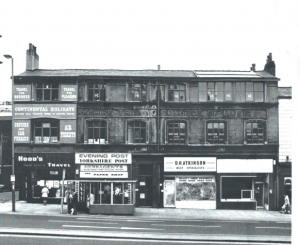
Baines was initially taught by his father, sitting at his side at the organ in the Ebenezer Primitive Methodist Chapel in Horbury, composing hymn tunes by the age of 11. From 1910 he travelled to Leeds every Saturday to study at the Yorkshire Training College of Music18 with Albert Jowett, a well-known teacher and composer in the city. Baines had season tickets for the Bradford Permanent Orchestral Society. He played piano duets with his father and gave solo piano recitals locally. He enjoyed the seaside orchestra at Bridlington and Parsifal in Leeds, eating shrimp sandwiches in the interval (31 March 1922). He heard the Hallé with Catterall playing Hamilton Harty’s Violin Concerto at St George’s Hall, Bradford, of which he wrote:
I wish he had not. I believe a lot of other people wished like me. It was boresome, & the work lacked ideas. Did it contain one good one? Catterall plays in a delightful manner. Very polished & correct. I like Harty’s conducting. I never before heard such a fine performance of the Tannhäuser Overture as was given tonight…the brass players in this orchestra are very good.
(17 March 1922)
All in all it was a parochial existence, and this young man had little contact with the wider musical world. Life was relaxed and cosseted. Baines worked, smoked, studied French, played chess, walked and cycled. Often he listed in his diaries what he was reading at the time, which ranged from lives of composers and Ernest Markham Lee’s recently-published On Listening to Music (1918) to Dickens, Poe and Rupert Brooke. He bought a second-hand copy of Grove and was passionate about Jerome K. Jerome.
One of the most valuable aspects of Baines’s diaries, particularly the first one, is what they reveal about life in a small town and its contained yet flourishing musical scene. On 7 January 1918 Baines describes a typical day, at a time when he acted as relief pianist for his father at the cinema:
Practice [sic] 10 am – to 12 noon. After dinner read until 1.30. Practice 1.30 until about 3.15. Then early Tea. Commence at the pictures 4.30, finish 7. (Usually I extemporise all the time, or if not, play a few light classical pieces – Chopin’s Mazurkas, Scriabin Preludes, etc). Arrive home about 7.30. Practice until about 9 or 9.30. Supper – then a good read, or a game of chess.
At the cinema Baines most often played alone, occasionally with others, such as the cellist Freda Kirmsé, who had trained at the RAM and in Leipzig. Baines had a habit, not popular with the film audience, of using the cinema to try out and learn new repertory:
Have started to go through Beethoven’s Sonatas at the pictures – & am doing the first 6 (about) – this first half week.
(23 April 1918)
Monday was washing day, Sunday the statutory day of rest, with Baines attending chapel and writing ‘I always have a feeling of “smallness” on Sundays – because of its sacredness’ (6 January 1918). There were informal local opportunities to perform his own music, and many instances when he mentions playing to people over luncheon. He only began to step outside this insular world when the critic and writer A. Eaglefield Hull (1876–1928) came across his music in 1920 and took it upon himself to champion his young Yorkshire compatriot.
Rather like the Derbyshire composer, Roger Sacheverell Coke (1912–72), Baines’s output is focused on piano music on account of his isolation and his almost enforced prowess on this instrument. His own, often luxuriantly chromatic, music is audibly influenced by his listening, with the impact of hearing Debussy, Delius and Scriabin, a composer whose Symphony no.2 made Baines’s back record ‘20 degrees below zero!’ (14 September 1921), clearly heard. His musical language is also coloured by his isolated circumstances, with an abundance of tone poems inspired by the local places he loved so well. The coast at Flamborough was a particular fascination, with several piano miniatures including the two works that constitute Tides, ‘The Lone Wreck’ and ‘Goodnight to Flamboro’’, linked to its rocky headland.

Local musicians
One of Baines’s close allies and supporters was the concert pianist and fellow Yorkshireman Frederick Dawson (1868–1940). When he first encountered Baines’s music, Dawson was at the height of his career (he had been the soloist at the inaugural concert of Queen’s Hall, worked closely with Grieg, toured Germany and Vienna, and gave first performances of Tchaikovsky’s Piano Concerto no.1 in Leeds, Sheffield and Manchester). In 1913, for example, an appearance in Manchester was described as ‘sparkling’, having ‘clarity’, ‘vitality’ and ‘dazzling execution’.19 He swiftly took into his repertoire an array of Baines’s works, notably Silverpoints and the Seven Preludes, taking the pieces across northern England. Baines became close to Dawson, not only as a fellow musician, but also as a friend, and wrote many letters to the pianist at his then home in Eyam, in the beautiful Derbyshire countryside, some of which describe listening experiences in a manner similar to that expressed in the diaries:
Letter to Frederick Dawson, 11 August 1920
Last night I went out to sea on a steamer, ‘The Frenchman’. Beneath a curling sky the water was a lovely dark greeny green. As the waves overlapped one another they appeared to be like running velvet…so soft and smooth. The light was a bluey grey but a slanting sun kissed a strip of sea into a golden pathway of light…
We had not been sailing very long before a ‘noise’ struck up…and made a crack in the picture. Music on the vessel…It was a most extraordinary Stravinsky-like combination was this ship’s orchestra – viz. harp and piccolo. O Lor! Imagine the skimmed-milk harmony. The people clapped of course. They would have clapped if the boat had gone down I suppose. Holidays are magical things, but it made me wonder if England would ever be a musical nation.20
Baines heard Dawson play on several occasions, notably at the Town Hall in Leeds, ‘as brilliant as ever – & he plays this magnificent concerto [Delius] as it should be played’ (15 February 1922). A week after this performance Baines went to a different Leeds venue, the Albert Hall, to see Dawson include five of his piano miniatures, a recital at which Dawson also played Chopin’s ‘butterfly’ study ‘more delightfully than ever I have heard it before…’ (22 February 1922).
Another important local connection was the violinist John Dunn (1866–1940), who occupied a position rather similar to that of Frederick Dawson. He too was from Yorkshire, studied in Leipzig 1878–81, travelled to America, was one of the first soloists to take Elgar’s Violin Concerto into his repertoire, gave many world tours, and retired to Harrogate. Baines first heard Dunn in March 1918 in a recital in York, an encounter that inspired ‘Dream Thought’ for violin and piano, offered to Dunn by the composer. He wrote in reply, as recorded in detail in Baines’s diary:
I am delighted with your ‘Dream Temple’. It’s just the thing. If you are well enough would you care to be the pianist at my recital? Am opening with some Bach & Paganini…2 or 3 smaller items & yours.
(7 December 1920)
Dunn’s ‘exquisite’ interpretation of this piece elicited intense emotions both from Baines and from his mother:
He drained the sponge of beauty to the last drop – & Mother sat & wept for joy – in the dark – in the back room.
(6 January 1921)
Baines’s favoured repertoire was his own music, alongside Arensky, Bridge, Chopin and above all Scriabin. On account of his ongoing ill health, his recitals were close to home, his main venues being St Mary’s Convent, St George’s Hall and the Tempest Anderson Hall in York, and the Assembly Hall, Horbury, as well as the familiar Primitive Methodist Chapel. The collection of programmes of his performances in the British Library demonstrates just how home-grown his musical career was and, once he had moved to York, Baines saw visits as locally as Horbury and Cleckheaton as a ‘vacation’ (21 January 1918). Yet from these recitals he developed close friends who helped to promote his limited career, among them the affluent Lady Dawson,21 with her husband Sir Benjamin the owner of the well-known country house, Nun Appleton. She was a talented amateur pianist, and in Baines found a sympathetic duet partner. She in turn supported his concerts, offered him the use of her fine Bechstein, took him for drives in her Rolls Royce and gave him the freedom of the grounds of the estate. To her, Baines wrote many poetic and appreciative letters.
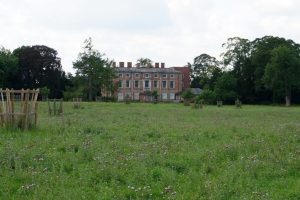
Working methods
Baines spent many hours searching for an original style, writing in 1918:
In reason, I often think, why should music be governed by laws? I feel that I must use my own ideas and methods. I cannot see how it matters, if the result is good. Naturally anybody has to have a grounding, but after that, I say ‘get out of the common rut’! I long to burst my bonds and intend doing so, in careful but firm steps.
(3 April 1918)
He was a critical worker, striving to improve his word-setting, and to learn more about string phrasing, and writing out compositions numerous times in order to grasp them more clearly. Most of his pieces were at some stage reworked. Perhaps surprisingly, given that Baines revised and re-revised, in the initial stages of a new piece he wrote very quickly:
Tuesday I got into working order again; & started on a ‘Poem’ for orchestra & piano…Up to teatime yesterday I had done 45 pages of score…& have enjoyed myself amongst it all. Tootling piccolo parts & bellowing the trombonist bits …!22
The diaries reveal how Baines listened, usually to recordings, socially, with friends and family. Sunday was often a time for musical contemplation. On one occasion he writes of going to Cleckheaton to share his experiences:
…had a good evening listening to the gramophone – (mainly pianoforte records), with Willie Halmshaw – who is a grand fellow – & Bertram Ellis. Real good company they are.
(20 April 1918)
However, Baines was well aware of the limitations of recordings, finding that re-listening to the same performance captured on record had the problem that it said ‘the same thing that has been said many times before’ (8 December 1921).
The composer’s listening experiences came not only from the actual auditory experience, but also from his private practice and through his diligent discovery of new music. He bought scores as often as he could, learning them extraordinarily quickly. Taking an example from the diaries, on 24 January 1918 he acquired several new works, including selected pieces by Byrd and the Grieg Piano Concerto, but also Cyril Scott’s Russian Dance, Palmgren’s Rococo, and Harry Farjeon’s The Four Winds. On the following exquisite day, ‘all tranquil, & sublime’, he memorised two of them; the day after that Scott’s seven-page score and Byrd’s Pavan, ‘The Earl of Salisbury,’ writing of the latter: ‘This piece brings into mind the impression of a beautiful cathedral – solemn, & grand’ (26 January 1918).
Through Baines’s meticulous registering of works in his diary of 1918 we learn that he knew Liszt’s La Campanella, Beethoven’s Piano Concerto no.4 and Bridge’s Capriccio in F sharp minor. And it would be interesting to probe further his assessment that Byrd’s ‘Carman’s Whistle’ was ‘rather a difficult piece to memorise’ (12 February 1918).
On 24 February he bought another three new pieces, by Balakirev, Palmgren and Scriabin. Many of these newly-memorised miniatures found their way into his recital programmes.
Whenever he could – and like Kelly – Baines purchased new music, mainly French and British, such as Benjamin Dale’s Piano Sonata, ‘a fine work but too long’ (16 April 1918), Ravel’s ‘irresistible’ Jeux d’Eaux (27 April 1918), Debussy’s Suite Bergamasque and Ireland’s Decorations. He played much of the latter’s music, including the Piano Sonata, his ‘somewhat vague Rhapsody – & his Ragamuffin which I like’ (30 April 1919). In 1922 he went so far as to write a paper on the ‘very fine’ Ireland violin sonatas, which was read at a British Music Society meeting on 11 February 1922. Baines’s comments on his own performances add to the idea of the composer listening to himself, for example a recital in Gainsborough on an appalling piano, where ‘dozens of notes were squinting horribly out of tune’ (29 March 1922).
Romantic appreciation
Baines’s descriptions of his listening experiences reflect his sensitive nature. There are numerous examples of this romantic aesthetic: ‘What a beautiful realm Chopin’s music takes one into. It is a balm at all times’ (5 March 1918), and ‘I love beautiful slow movements – they record one’s heart & mind so well’ (18 March 1918). Of Debussy he wrote: ‘He was a proper “dreamer”. I love his works’ (27 March 1918).
Baines always responds emotively, with language of an exuberant nature. Of his own playing of the Waldstein sonata to his mother he writes that he ‘bathed in its depths’ (4 January 1920). Of being in York Minster, ‘a glorious, majestic building’ he often visited: ‘Oh! how the music thrills & makes one go cold’ (20 May 1918). While Baines most often focuses on how music moves him, sometimes he, like Kelly, records factual information: in March 1919, for example, he goes with his new friend, artist Karl Wood,23 to see the Carl Rosa company in Madame Butterfly, listing Aimee Kemball as Butterfly, Constance Willis as Suzuki and Edward Davies as Pinkerton, saying:
A memorable night. The music is great at times, the treatment of the orchestra is very interesting – conventions to the wind. Pure melody is not Puccini’s forte – to me – but all the same I have enjoyed it and should like to hear it again.
(21 March 1919)
A few days later, on Palm Sunday, Baines is in York Minster to listen to Bach, again listing those he has heard, including tenor Gervase Elwes (19 April 1919). In the following year he hears the Catterall quartet playing Mozart, Elgar and Borodin, ‘a great treat’, ‘a fine combination’, and the ‘first time I have heard a good string quartet’ (30 January 1920).
Baines’s assessments, with such charming statements as Debussy’s L’Après-Midi giving off ‘all kinds of soft lights’ (15 September 1921), might be interpreted as being naïve, but are wonderfully natural responses and reveal a highly receptive brain and ear. He much preferred hearing contemporary music. On sitting behind the double basses at a concerto given by the London Symphony Orchestra (LSO), he writes ‘to my regret did not play anything modern…we were given the usual Mozart & Wagner’ (20 February 1920), and at a concert in York:
Went to hear Acis and Galatea with the York Choral Society, also Holst Hymn of Jesus. Excepting for about 2 arias the Handel piece was boring to a degree – & got tremendous applause! The Holst is a magnificent work – great – & a few more sensible people clapped like fury – otherwise the clapping wouldn’t have awakened a sleeping child.
(8 March 1921)
As a keyboard player, Baines’s observations on contemporary pianists are particularly noteworthy: critical while never truly unkind. He listened to pianist Mark Hambourg, with his ‘fine technique but no personality’ (13 October 1919), and in 1920 heard ‘typically British’ William Murdoch at the Wigmore Hall (21 February 1920).24 He liked the ‘crisp, happy playing’ of Arthur de Greef and the youthful Irene Scharrer’s ‘beautiful’ interpretation of Beethoven’s Piano Concerto no.4. In 1922 Baines heard Busoni in Bradford:
a masterly player, a musician with great conceptive powers always. I didn’t like his own Fantasy on ‘Carmen’ which he played… I thought it often common; & in places even vulgar…But as a player…magnificent…
(24 February 1922)
Although visits to places outside Yorkshire were very much the exception for Baines, the highlight of his listening life came in May 1919 on a trip to London. Here, as had Kelly a few years earlier, he saw the Ballets Russes at the Alhambra (where they had been relocated following a series of successful performances at the Coliseum)25 in a performance of L’Oiseau de Feu, starring Lydia Lopokova as the firebird and conducted by Ansermet. The sensation of hearing Stravinsky’s ‘weird harmonies’ made Baines’s hair stand on end (12 May 1919). An interesting cross-reference comes from one of John Ireland’s pupils, Horace Randerson (1892–1992), who was at the same performance, and also recorded his response to Stravinsky at first hearing: ‘…most bizarre & fantastic but very fine’.26 In that same week Baines went to recitals by Evelyn Howard Jones and Sydney Rosenbloom. On 15 May he went to the Queen’s Hall to hear the LSO and Hamilton Harty play Paganini and Brahms (both with Louis Godowsky as soloist), Debussy and Tchaikovsky, of whom he said listening to Francesca da Rimini gave him ‘cold shivers of glory’. 1919 was also the year in which Baines’s fortunes began to improve, with some short pieces – Paradise Gardens and Seven Preludes – published by Elkin. The first of these is regarded by many as being Baines’s ‘signature’ work, and has elicited more in the way of textual and musical interpretations than many other pieces.
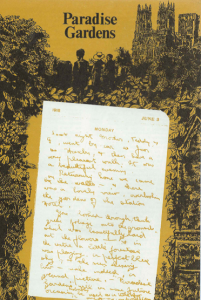
Conclusion
While these two pianist composers both worked in Britain, they had very different backgrounds. Kelly went to Eton, Baines to the Wesleyan Day School in Horbury. Kelly was a student at Oxford, Baines at a private music school in Leeds. Kelly was 35 when he died, Baines just 23. Very different perspectives on a musical decade can be uncovered through the diaries of these composers. Kelly’s listening is wide-ranging and extensive; therefore its impact on his own music is hard to define. His writings are very detailed, offer insights into his routines, and often record the smallest activities. Baines tells us what he heard in concert halls and at the seaside, but perhaps more importantly gives profoundly personal reactions. He was a very sensitive character, who wept on hearing the Scots Greys in the Knavesmire Barracks playing ‘Peace, Perfect Peace’.27 Baines’s listening experiences are very local, very personal, sometimes elegiac, sometimes droll:
I went to hear Dr Bairstow give an organ recital in the Minster. Afterward I wished I hadn’t gone. The seats were hard, & tryingly uncomfortable….& the recital monotonous. I came away with the impression that I have had for a long time…that the organ is very mechanical, & apart from bellowing & trembling, possesses no soul as an instrument.
(7 November 1921)
There are also similarities between the two authors. In his latter journals Kelly records the war in sound, sometimes writing notation into his journal, as in this example from 23 November 1914, where he notes the song of the soldiers training in Greenlaw in Scotland:
At 3.30pm we went for a route-march along the road leading west across and alongside the railway. The platoon surprised me by a burst of song when I made some remark about its unmusical character. Apparently the men were under the impression I wouldn’t allow singing on the march. One of their songs was ‘Here we are, Here we are, Here we are again!’ I could discover no continuation of the tune or the text!28 Baines likewise ‘listens’ to the war: ‘Now, at time of writing it is 1 o’clock a.m. We have been sitting up on account of an air-raid. Heard many thuds – like low A strings breaking – in the distance.
(12 March 1918)
Kelly’s musical world was very different to that of Baines. He was part of Speyer’s Classical Concert Society committee, and friends with many influential London musicians. He knew Parry and Stanford. Wealthy and well connected, he went to Bayreuth and travelled widely. He accompanied Pablo Casals and the famous d’Arányi sisters. In the case of Baines, it is perhaps surprising, given that he was 20 years younger, to realise that his piano music was produced at the same time as much of that of John Ireland. The latter’s Piano Sonata, for example, was premiered in 1920. But while Ireland was a national name with many contacts across the country, Baines languished in obscurity. Living an insular, protected life in Yorkshire, without the important contacts with the Royal College enjoyed by most of his contemporaries, Baines’s own music spread very slowly in a handful of publications.
In one respect the fact that Baines never left his home county to take up composition studies was a hindrance to him. He had almost no personal contact with contemporary composers and little formal tuition, compelled therefore to find a method of teaching himself. Conversely, his distance from the English composing community brought a distinctive flavour to his composition and to his writing. Although now remembered only for a collection of short piano pieces, at the time of his early death he was beginning to make an impact nationally, both as a concert pianist and a composer. Baines had an uncanny ability to read, listen and critique, and the wealth of detail available from his diaries provides a valuable alternative listening narrative. In his 1946 novel, Bright Day, J. B. Priestley, with great nostalgia, tried to evoke the Yorkshire past in fiction. Baines’s writings from his real, lived experiences, vividly conjure up a real lost world, a lost time.
Select bibliography
Carpenter, Roger. Goodnight to Flamboro’: The Life and Music of William Baines. Rickmansworth: Triad Press, 1977.
Cookey, Jon and McKechnie. Graham (eds). Kelly’s War: The Great War Diary of Frederick Kelly 1914–16. London: Blink, 2015
Pirie, Peter J. ‘William Baines’, Music & Musicians 21, November, 1972, pp. 36–40.
Radic, Thérèse. ‘Editing the diaries of F. S. Kelly: unique insights into an expatriate’s musical career’, Context 19, Spring, 2001, pp. 19–33.
Radic, Thérèse. Race Against Time: The Diaries of F.S. Kelly. Canberra: National Library of Australia, 2004.
Smith, J. Sutcliffe. A Musical Pilgrimage in Yorkshire. Leeds: Richard Jackson Ltd, 1928.


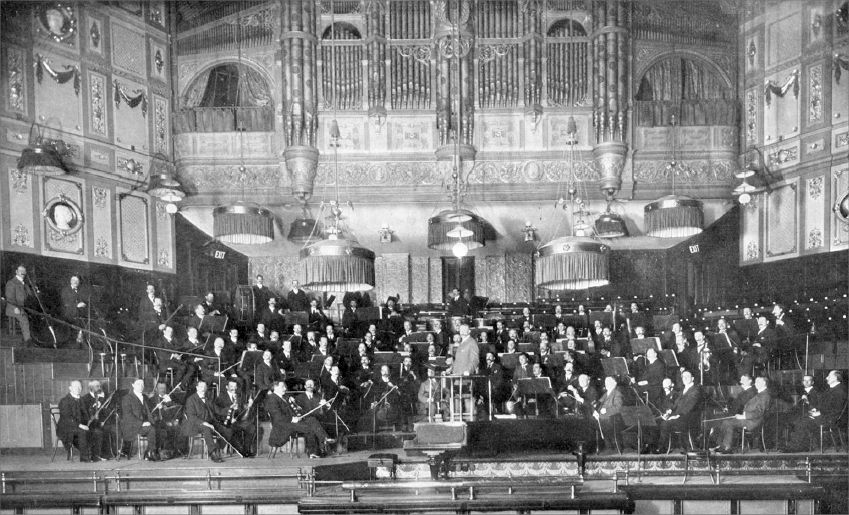
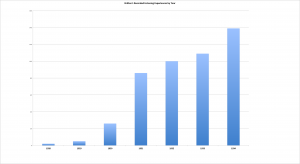
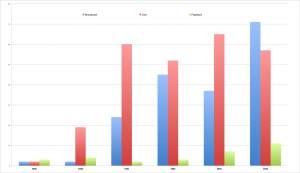
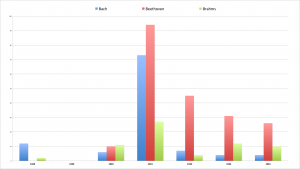
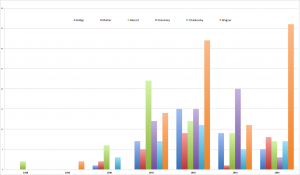
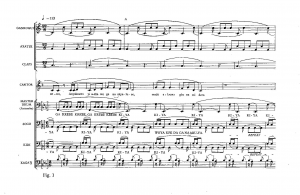
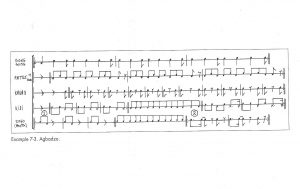
You must be logged in to post a comment.